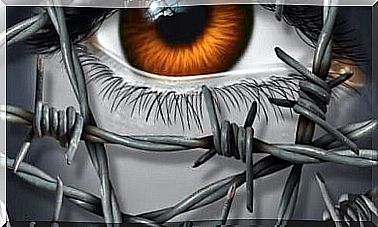Migraine Pharmacotherapy

Migraine is, nowadays, the most common type of headache, being an important cause of disability in our society. Hence the importance of studying the treatments, both those indicated for acute crises and for prevention, which constitute the pharmacotherapy of migraine.
What is migraine?
Migraine is a recurrent and severe headache, usually located on one side of the head, which manifests as a flare-up. It is usually accompanied by nausea and vomiting, as well as hypersensitivity to light and noise.
There are different types of migraines, including:
- Migraine with aura: This is preceded by visual sensations called auras. This is an advance warning before the start of the crisis;
- Migraine without aura: it is the most common. It is usually characterized by being a unilateral, throbbing pain of moderate to severe intensity that is aggravated by physical activity;
- Retinal migraine: characterized by being accompanied by episodes of disturbance in vision; the patient may see bright areas or areas with no vision.
- Precursor symptoms of childhood migraine: Sometimes children who suffered from childhood migraine experience recurrent episodes such as vomiting, abdominal pain, or dizziness as adults.

Risk factors
Although the causes of migraine are not well known, it is known that the influence of certain risk factors favors the appearance of this type of crisis. Among them are:
- Stress: is one of the most important risk factors;
- Some foods and beverages, such as alcohol, chocolate, coffee or strong cheeses;
- Intense physical exercise;
- Strong temperature changes;
- Some medications, such as nitroglycerin or gemfibrozil;
- Insomnia;
- Hormonal changes in women: migraine attacks may appear during menstruation, early pregnancy or menopause;
- Certain smells, intense sounds and bright lights.
Migraine Pharmacotherapy
Regarding the pharmacotherapy of migraine, there are two main groups of drugs: those used for the acute treatment of the crisis and those used for prevention or prophylaxis.
Drugs used for the acute treatment of migraine attacks
Migraine treatment aims to eliminate the pain and symptoms associated with it. We can distinguish three groups of drugs:
- Specific: ergotics and triptans, fundamentally;
-
- Ergot alkaloids: they are non-selective serotonin 5-HT1 receptor agonist drugs, which is why they act on different body receptors, causing some unwanted effects, such as dependence and addiction;
- Triptans: are selective serotonin 5-HT1 receptor agonist drugs. They exert a vasoconstrictor and anti-inflammatory effect on specific receptors, such as 5-HT1B and 5-HT1D. One of the best known is sumatriptan.
- Non-specific: NSAIDs and acetaminophen. Generally, they are not very effective in acute attacks of moderate or severe pain, but are recommended in attacks with mild to moderate pain.
- Adjuvants: drugs to treat associated symptoms, such as antiemetics to treat vomiting.
Prophylactic Migraine Drugs
When migraine attacks do not respond adequately to medication, as well as when they recur too frequently and alter the patients’ quality of life, preventive treatment can be used to reduce the intensity, frequency and duration of the attacks.
Some drugs used as migraine prophylactics are:
- Propanolol;
- Timolol;
- Metoprolol;
- Sodium Divalproate;
- Topiramate;
- Botulinum toxin.
Currently, there are new drugs that have shown efficacy with few side effects. Some of them act in the peptide pathway related to the calcitonin gene; are the gepanes and monoclonal antibodies.
Likewise, other drugs are undergoing clinical studies to be approved in the near future.
For a correct treatment of migraine, appropriate drugs must be combined with non-pharmacological measures.
As important as having a good treatment for an acute crisis is to consider, when necessary, a preventive treatment that helps to reduce the frequency and intensity of the attacks.
More than 40% of migraine patients are undiagnosed. So if you experience headaches frequently, don’t think twice about seeing a specialist!









